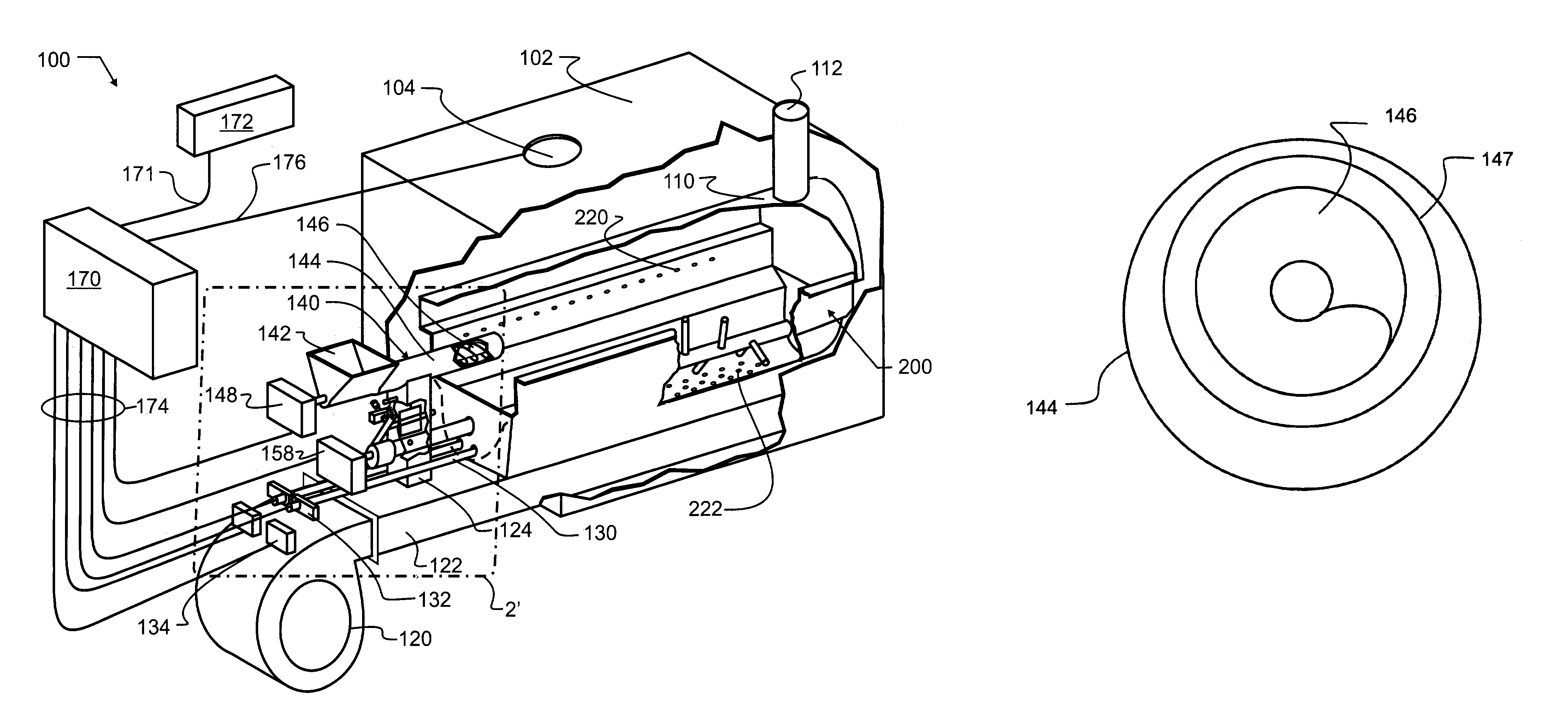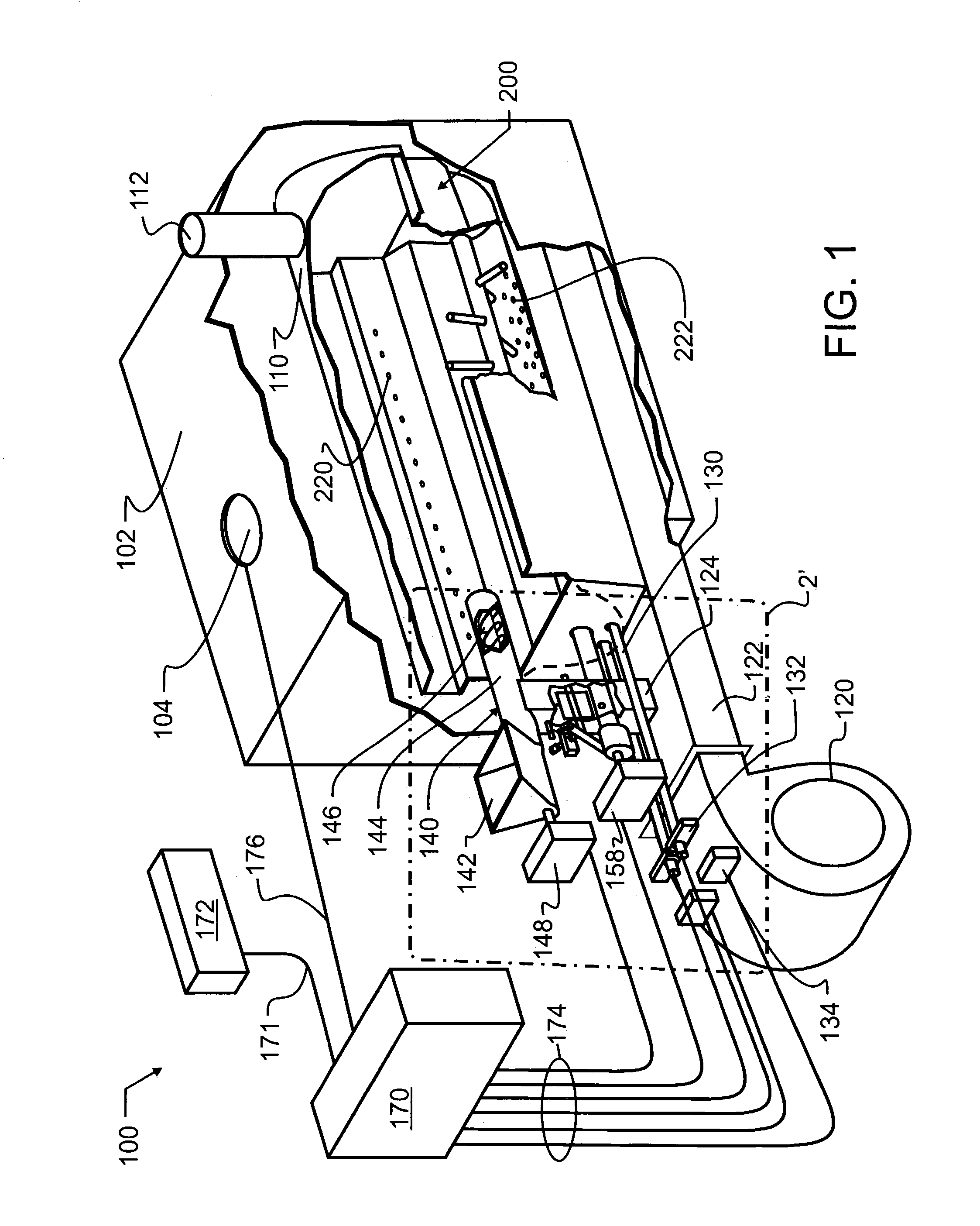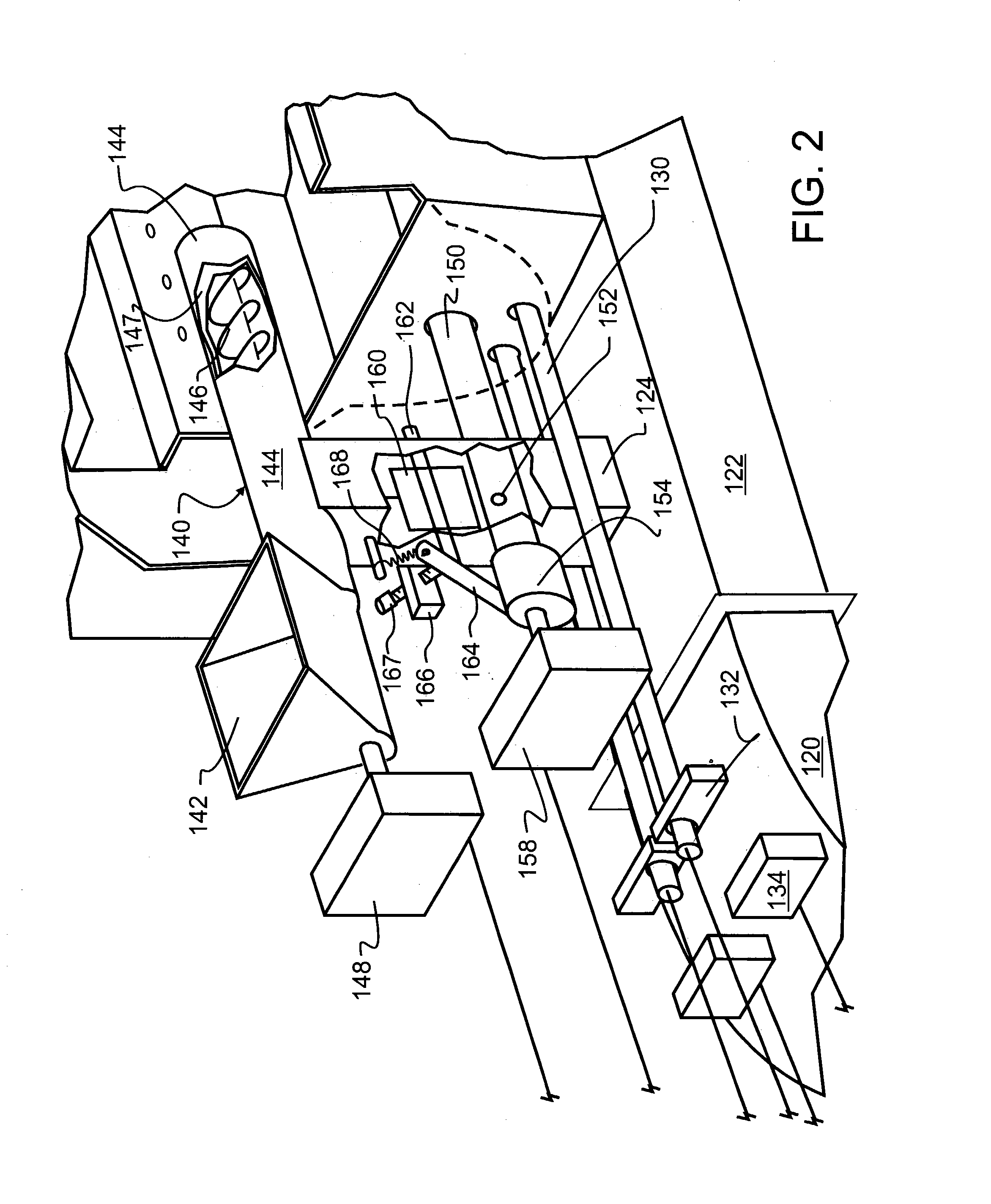Corn burner
a burner and corn technology, applied in the field of furnaces, can solve the problems of not being able to reliably control the flow of air through the furnace, not being able to predict the temperature, and not being able to control the size of the kernel, so as to prevent the formation of clinkers, maximize the total capacity of the furnace for a given volume, and efficiently convert a pellet fuel
- Summary
- Abstract
- Description
- Claims
- Application Information
AI Technical Summary
Benefits of technology
Problems solved by technology
Method used
Image
Examples
Embodiment Construction
[0025]A most preferred embodiment corn burner 100 designed in accord with the teachings of the present invention is illustrated in FIG. 1. A fire chamber wall formed by cover 110 and fire pot 200 isolates combustion gases from an exterior thereof, while providing a compartment within which safe and controlled burning may occur. Passing through the fire chamber wall is an exhaust 112, which most preferably encloses and directs combustion gases to a safe exterior vent. The overall efficiency of corn burner 100 may be improved from the schematic illustration of FIG. 1 if, for example, the exhaust is brought through the interior of furnace exterior wall 102, such as, for example, by adding two right angle bends therein which would run exhaust 112 parallel to fire pot 200. This provides more surface area for heat to be exchanged through from an exhaust gas stream and the room air being heated.
[0026]Auger 140, through outer auger tube 144, also passes through the fire chamber wall. Auger ...
PUM
 Login to View More
Login to View More Abstract
Description
Claims
Application Information
 Login to View More
Login to View More - R&D
- Intellectual Property
- Life Sciences
- Materials
- Tech Scout
- Unparalleled Data Quality
- Higher Quality Content
- 60% Fewer Hallucinations
Browse by: Latest US Patents, China's latest patents, Technical Efficacy Thesaurus, Application Domain, Technology Topic, Popular Technical Reports.
© 2025 PatSnap. All rights reserved.Legal|Privacy policy|Modern Slavery Act Transparency Statement|Sitemap|About US| Contact US: help@patsnap.com



